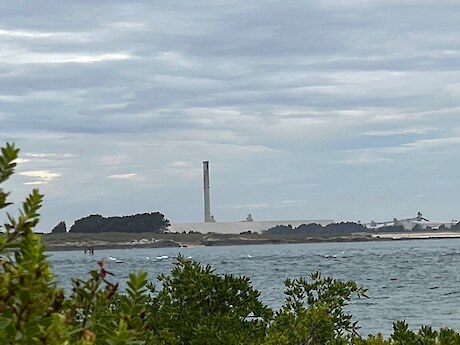Government removes $60m carbon subsidy from Tiwai Point smelter in Southland
Republished from Stuff: 25 March 2022
Article written by Henry Cooke - Chief Political Reporter
The Government has removed a complex, subsidy worth about $60m, from New Zealand Aluminium, which runs the Tiwai Point Smelter in Southland.
Climate Change Minister James Shaw asked the Government to agree to this measure late in 2021, a newly-released Cabinet paper has revealed.
The subsidy saw the Government provide 934,400 free “units” a year under the Emissions Trading Scheme (ETS) to the smelter as part of an electricity allocation.
Companies have to surrender a certain number of these “units”, currently priced at $75 based on their emissions, with each unit roughly translating to a tonne of carbon dioxide.
But some large emitters and large power users have a number of free units allocated each year to soften this blow, and to recognise that they may be competing with companies in other countries that face no carbon penalties.
Shaw argued that these free units no longer made sense for Tiwai as it had negotiated a new and cheaper deal for its electricity in January 2021.
Since this electricity was largely emissions-free anyway – coming from the Manapouri Dam right beside Tiwai – the price was not particularly inflated by a higher ETS price. (While Tiwai largely uses clean energy, the actual smelting of aluminium still produces emissions.)
Tiwai disagreed with Shaw on the matter, and with an independent analysis commissioned by Shaw to look at the appropriate price.
New Zealand Aluminium Smelter (NZAS) chief executive Chris Blenkiron said the smelter accepted the Government’s decision, but noted that Tiwai produced some of the lowest-carbon aluminium in the world.
Shaw noted in the Cabinet paper that the change could have large flow-on effects for the entire ETS, as it removed a significant number of free units from the system.
Companies can buy and sell emissions units – meaning businesses that emit less are able to sell their excess allocation to other companies who are still emitting more, profiting from the transaction.
The Government has been slowly moving to place an actual cap on the number of units in circulation.
“The recent decision to set the electricity allocation factor under the New Zealand Emissions Trading scheme for NZAS’s current electricity agreement to zero is one we accept.
“However, we note that aluminium production accounts for less than 1 per cent of New Zealand’s total carbon emissions, while aluminium continues to play a critical and growing role in a world economy focused on decarbonisation,” Blenkiron said.
“At NZAS we are proud to produce some of the lowest carbon aluminium in the world while many of our international competitors producing high carbon metal are not facing a price on carbon.”
Shaw noted in the Cabinet paper that the change could have large flow-on effects for the entire ETS, as it removed a significant number of free units from the system.
Companies can buy and sell emissions units – meaning businesses that emit less are able to sell their excess allocation to other companies who are still emitting more, profiting from the transaction.
The Government has been slowly moving to place an actual cap on the number of units in circulation.
Posted: 26 March 2022
